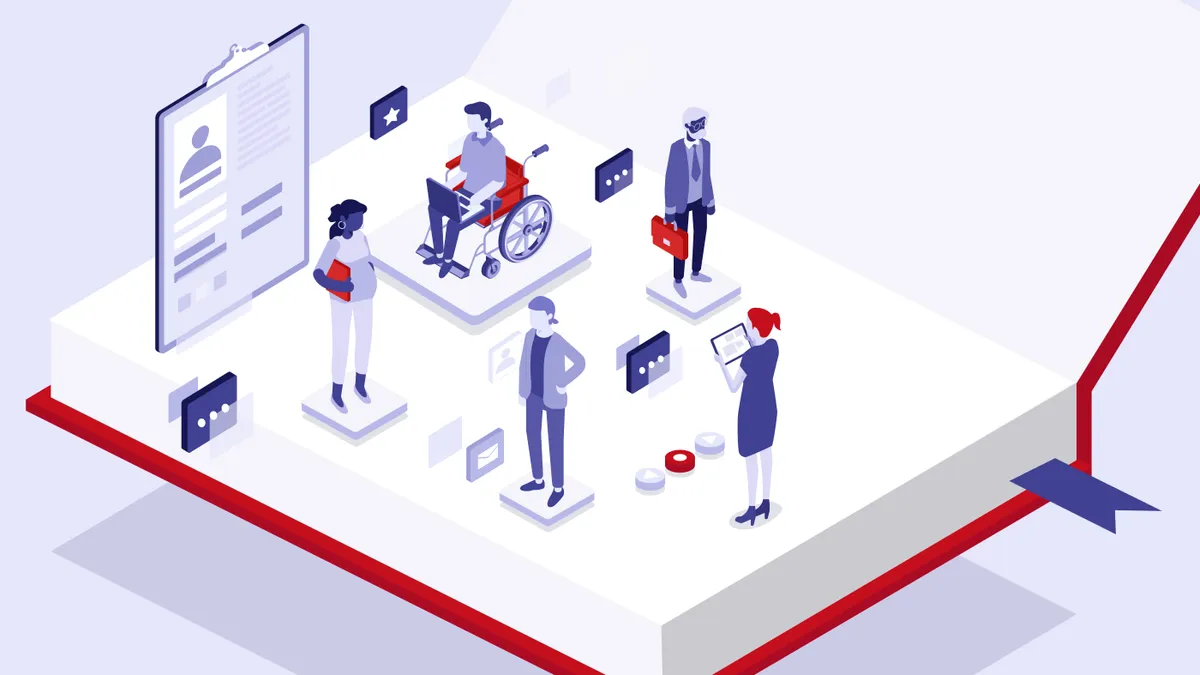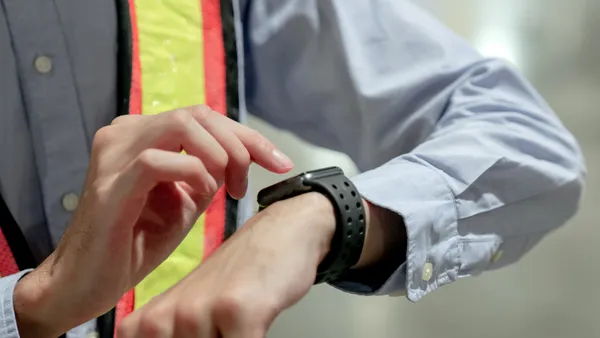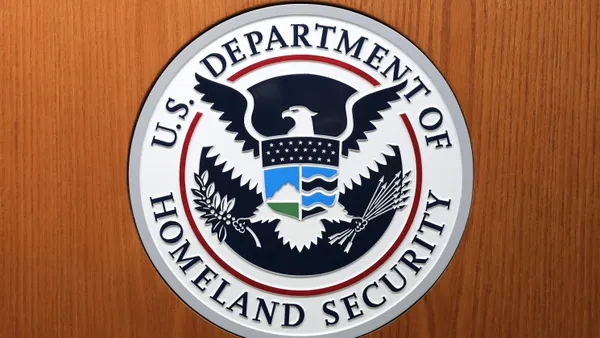While chatbots may be most commonly known as a way to receive customer service help, they are increasingly part of the recruiting process for some employers.
AI-enabled chatbots fuel chat-to-apply technology, which is one way companies can funnel high volumes of candidates through the hiring process.
“Vendors are very keen to share how [generative AI] can improve the efficacy of chatbots and take over more of the recruiting process,” said Betsy Summers, principal analyst on the future of work team at Forrester. “It’s positioned as a benefit for buyers whose recruiting teams have been squeezed in recent years with the focus on operating efficiency and numerous layoffs.”
These bots are more conversational than legacy chatbots, and generative AI can understand synonyms and misspellings. Such tools also require less set up than pages of canned responses and workflows.
Companies in the space say chat-to-apply bots can help candidates; “It’s all about the applicant experience and meeting them where they are,” according to Nico Roberts, chief business officer at hiring platform Fountain.
In some ways, chat-to-apply is another step in a technological progress to do just that, moving from email to SMS and, depending on the potential applicant pool, to Whatsapp and Facebook Messenger.
But will candidates accept them? It depends on who a company is trying to hire, and whether chat-to-hire bots enhance instead of detract from the hiring process.
Helping instead of hampering the application process
How chat-to-apply works depends on the company, said Roberts. The bot could be as simple as a “glorified application form,” he said, which prompts applicants to input information, followed by a message that the company will get back to them. That doesn’t necessarily need to be AI-powered, he added, and can be added as a widget to a company’s career website.
At the next level, chat-to-apply can identify which candidates are most likely going to be good fits as they’re applying, and schedule an interview, or even offer them an instant interview with a live person.
A chat-to-apply bot can remind candidates of scheduled interviews and confirm the appointments. It can also answer candidate questions 24/7; Fountain says that’s important because candidates often seek info outside of traditional business hours.
A chat-to-apply bot also may be able to identify when a candidate is struggling with the process, and offer them help from a real person, who can take over and help them through the process.
“Theoretically, a candidate could go through the entire attraction, screening, interviewing and selection process without talking to a human once,” Summers said. This happens more often when hiring hourly workers or those candidates whose skills could be verified in a background screening process.
Potential drawbacks
It’s unlikely chat-to-apply bots are a perfect solution for every company, for every potential job that needs to be filled.
Employers may need to take a critical look at offerings that fail to disclose that generative AI is being used. According to Forrester’s Global Government, Society and Trust Survey, adults in the U.S. remain skeptical of some corporate AI use. They found that only 29% of U.S. adults trust the information an AI chatbot provides.
Chat-to-apply could also present a legal problem if it has any mechanisms in its algorithm to eliminate applicants. “That’s effectively AI screening the candidate, which puts it into the crosshairs of existing employment laws,” Summers said.
Roberts said that it should be obvious within a quarter or two if chat-to-apply is working or not — for applicants and those doing the hiring. Not every company will have the appetite to bake it into their hiring flow: “Don’t just add more stuff for the sake of adding more stuff.”












